![]()
Analysis of the Iranian and Hezbollah Terrorist Attacks against Israeli Targets Abroad: The Situation on the Ground and Background Information by The Meir Amit Intelligence and Terrorism Information Center, full version, febr. 15, 2012. This article is published in four parts, due to its length. For more, please visit ITIC.
Overview
Since the late 1980s, Southeast Asia, particularly Thailand, has been a favorite theater of terrorist operations for Iran and Hezbollah. In our assessment, that is the result of the combination of operative convenience (i.e., the loosely organized counterterrorism structures of the local security services), the ability to easily recruit local collaborators for logistical assistance, and the presence of facilities and individuals belonging to countries targeted by Iran and Hezbollah’s terrorist activity.
During that time, three anti-Israeli terrorist attacks in Thailand were prevented or failed, while two others, aimed at Kuwaiti and Saudi targets, were carried out. In addition, security services in the Philippines, Singapore, Malaysia and other countries in Southeast Asia exposed Hezbollah terrorist networks and prevented terrorist attacks. In Southeast Asia the targets were countries defined by Iran as its enemies, primarily Israel, the United States, Saudi Arabia and Kuwait. The activities were part of terrorist waves initiated by Iran at various times and carried out by Hezbollah in Southeast Asia and other places across the globe.
Since the late 1980s, the following acts of terrorism took place in Bangkok:
1) An attempted terrorist attack prevented by a “work accident:” So far the target of the attack is unknown. In our assessment the plan was to attach one or more IEDs to a vehicle used by Israelis. The planned attack was exposed on February 14, 2012.
2) A foiled attempt to detonate IEDs at a Bangkok site frequented by Israelis (mid-January 2012).
3) A failed attempt to detonate a car bomb at the Israeli embassy (March 1994).
4) The hijacking of a Kuwaiti airliner en route from Bangkok to Kuwait, and a foiled attempt to hijack another airliner (April 1988).
5) The murder of three Saudi diplomats (January-February 1988).
In addition, networks belonging to Hezbollah were exposed and terrorist attacks planned were prevented in the Philippines, Malaysia, Singapore and other countries in Southeast Asia:
1) An Indonesian Hezbollah operative named Pandu Yudhawinata was detained at the Manila Airport in the Philippines in 1999. During questioning he revealed Hezbollah’s plans to recruit Thai, Malaysian and Indonesian nationals to carry out terrorist attacks in Southeast Asia and other countries (Australia and Israel). The Philippine authorities said that the potential targets of the network included the embassies of Israel and the United States, Israeli companies, synagogues, American and Israeli visitors, the offices of Israel’s national airline and Israeli and American military and commercial vessels.[32]
2) In 1995, Hezbollah established a terrorist network in Singapore to attack local American and Israeli targets. To that end, Hezbollah operatives were dispatched from Lebanon to Singapore, where they recruited five Muslim civilians. Their objective was to attack American and Israeli ships passing through or anchored in the Singapore Strait. The cell members also photographed the local Israeli embassy.[33]
3) In the late 1990s, a key local Hezbollah operative belonging was arrested in Malaysia. The network he belonged to was planning terrorist attacks in Southeast Asia.[34]
Failed Iranian-Squad Terrorist Attack (As of February 16)
At around 1400 hours on February 14 an IED exploded in a rented apartment in a twostory building in Bangkok, possibly a “work accident.” The building is situated in the vicinity of the Israeli embassy in Bangkok. The explosion revealed the existence of an Iranian cell consisting of at least four terrorists. Two of them fled the scene in a taxi. Another person came out from the house five minutes later, threw an IED at a taxi, and fled.
The fleeing terrorist stopped near a school, where he threw another IED at a police vehicle. The IED hit a civilian truck, bounced back at him, and exploded, blowing off the terrorist’s legs. Three other people were injured (bangkokpost.com).
The injured man carried an Iranian passport and was identified as Saeid Moradi. Shortly thereafter, at about 4:00 PM, the police detained another suspect at the Bangkok Airport who was planning to flee the country to Malaysia. The second suspect, who also carried an Iranian passport, was identified as Mohammad Khazaei, 42. Investigation revealed that he had come to Thailand from Malaysia on February 8, on the same flight as Moradi and another operative who was detained in Malaysia (bangkokpost.com, February 14, 2012).
Ten pounds (22.2 kilograms) of C4 plastic explosives and two radio transmitters were found in the apartment. The police said the IEDs used in the aforementioned events were made from the same type of explosives. According to experts, their blast radius was 120 feet (about 36.6 meters). They said that no similar IEDs had previously been found in Thailand (bangkokpost.com, February 14, 2012). According to the Thai newspaper Bangkok Post (quoted by the British Guardian, February 15), the Israeli ambassador said that in the apartment the Thai police neutralized two magnetic charges that could be attached to a vehicle. In our assessment the terrorist cell was planning to attach an IED to a vehicle, similar to the attempted terrorist attacks in India and Georgia.
The third operative, an Iranian named Masoud Sedaghatzadeh, was detained in Malaysia on February 15. Another operative carrying an Iranian passport, Leila Rowhani, managed to flee to Tehran.
Attempted Terrorist Attack against an Israeli Target (Mid-January 2012)
Overview
A terrorist attack against an Israeli target in Bangkok was foiled in mid-January 2012. In our assessment the attempt was made by the Quds Force, employing Hezbollah for the attack. According to media reports, the target was a site frequented by Israelis.
The terrorist attack in Bangkok was planned as one of a series in retaliation for the disruption of the Iranian nuclear program and the death of senior Hezbollah military operative Imad Mughniyeh. According to Israel Security Agency Chief Yoram Cohen, prior to the terrorist attack Iran had tried to attack Israeli targets abroad using its Islamic Revolutionary Guards Corps (IRGC). Three serious terrorist attacks were prevented: one in Azerbaijan (see the section on Azerbaijan), another in Turkey (see Appendix I on Turkey), and the third in Thailand (interview with Yoram Cohen, Israeli daily Haaretz, February 3, 2012).
Situation on the Ground
Current information about the foiled terrorist attack in Bangkok:
1) On January 12, 2012, the Thai police detained Lebanese Hezbollah operative Hussein Atris as he was trying to board a flight at the Bangkok Airport. He is suspected of having taken part in preparations for the terrorist attack in Bangkok.[35] According to the New York Times, he was arrested after the Thai authorities had received a warning from Israeli intelligence that a group of Hezbollah terrorists was planning to carry out a terrorist attack at a tourist site in Bangkok.[36]
2) The Hezbollah operative Hussein Atris carried Lebanese and Swedish passports. Anders Jörle, spokesman for the Swedish Foreign Ministry, reported that Atris’ Swedish passport had expired. He also noted that the Swedish authorities could not confirm or deny whether Atris was a Swedish citizen. The other suspected terrorist was James Sammy Paolo, 40, from Lebanon, who was Atris’ roommate. The Thailand Criminal Court issued a warrant for Paolo’s arrest on charges of the possession of illegal chemical substances. He has not been apprehended so far and the authorities are trying to ascertain whether he is still in Thailand.[37]
On January 16, 2012, acting on information obtained from the Lebanese detainee, Thai police forces searched a three-floor commercial building in a city near Bangkok. On the second floor police found 4,380 kg (9640 pounds) of fertilizer (urea) and 38 liters (10 gallons) of ammonium nitrate liquid. In the proper concentration, ammonium nitrate is an explosive,[38] hence in many countries possessing large quantities requires a permit. Urea (found mixed with nitric acid) is used to produce urea nitrate, an improvised explosive.
In our assessment the chemicals were meant to be used to prepare one or more IEDs to attack an Israeli target (or several Israeli targets) in Bangkok. The large quantity of chemical explosives found could indicate that some of them were also supposed to be shipped to other countries to be used in terrorist attacks, as reported by the Thai police.[39]
Failed Car Bomb Attack at the Israeli Embassy in Thailand (March 1994)
Overview
In March 1994, a suicide bomber attempted to carry out a terrorist attack on the Israeli embassy in Thailand with an explosives-laden car. The foiled terrorist attack was similar to those carried out on the Israeli embassy in Argentina in March 1992 and on the Jewish community building in Argentina in July 1994. All these attacks were carried out by Hezbollah terrorists assisted by Iran.
The following is the information we have on the failed terrorist attack:[40]
1) As the suicide bomber exited an underground parking lot, he crashed into a local vehicle (an automated rickshaw called a tuk-tuk), panicked and fled the scene. When police inspected the van they found a water tank filled with approximately 1,000 kg (2,200 lbs) of fertilizer, two oil containers, a battery and C4 plastic explosives. They also found two switches beneath the driver’s seat, apparently wired to set off the explosives.
2) After removing the explosives from the tank, police also discovered a dead body. The van’s owner recognized the body as one of her local drivers and said that she had rented the vehicle with the driver. Apparently he was murdered at some point by the Hezbollah terrorists who had rented the truck, and his body was placed in the explosive-filled tank. Had the bomb gone off as planned, his death would have been discovered.
3) A group of Thai collaborators involved in the terrorist attack was exposed in 1999 with the arrest of Pandu Yudhawinata, a Hezbollah operative from Indonesia. Pandu was arrested in the Philippines as he stepped off a Philippines Airlines flight from Zamboanga City to Manila. His arrest led to the discovery of a number of Hezbollah cell operatives across Thailand. During interrogation they provided information about Pandu’s terrorist network and Hezbollah’s role in the failed 1994 terrorist attack.[41]
4) Pandu, investigators discovered, was the one who had rented the van for the terrorist attack under a false identity. He was also in charge of coordinating with senior Hezbollah commanders in Lebanon and took care of the network’s passports and purchases. Investigators also discovered that Hezbollah was planning to target other Israeli and American interests in Southeast Asia and Europe.[42]
5) An inspection of Pandu’s luggage revealed documents with the names and telephone numbers of various Hezbollah and Iranian intelligence operatives. Also found were five Philippine passports in the various names, a photocopy of a sixth passport, and personal data for five more individuals. Investigators therefore concluded that one of Pandu’s specialties was procuring false passports for Hezbollah operatives. In addition, they found that Pandu maintained Hezbollah arms caches in both Bangkok and Manila.[43]
6) From 1994 until his arrest in 1999, Pandu made several trips to Iran and Lebanon for training. He also carried out missions for Hezbollah which involved the procurement of weapons and fake passports in Indonesia, surveillance of terrorist targets and recruiting members. Although he was living in Malaysia at the time, Pandu was also involved in stockpiling weapons in both Thailand and the Philippines, presumably in preparation for future missions.[44]
7) In 1996, Hezbollah sent one of the operatives involved in the Bangkok bomb plot two years previously back to Thailand and other countries, apparently to prepare more terrorist attacks. However, they were apparently contingency plans in preparation for attacks to be carried out if and when the order was given.[45]
Hijacking a Kuwaiti Airliner (April 1988)
On April 5, 1988, two Hezbollah squads attempted to hijack two Kuwaiti airliners en route from Bangkok Airport to Kuwait. The Thai police arrested one of the squads at the Bangkok Airport before it could board the flight.
The other squad managed to take over a Kuwaiti airliner, forcing the pilot to land in the Iranian city of Mashhad. The hijackers sought the release of seventeen imprisoned Shi’ite terrorist operatives jailed in Kuwait for their role in the 1983 bombings of the American and French embassies. During the hijacking two passengers were murdered and their bodies thrown off the plane.
A bargain was made with the hijackers to release the hostages in exchange for free passage to Beirut and the release of terrorist operatives jailed in Kuwait. Lebanese Hezbollah, including its top operative Imad Mughniyeh, was publicly accused of responsibility for the attack by the Kuwaiti authorities.
Killing Three Saudi Arabian Diplomats (January-February 1989)
At the beginning of 1989, three Saudi diplomats working at the embassy in Bangkok were shot dead. Their killing was part of a wave of terrorist attacks initiated by the Iranians between 1988 and 1999 targeting were Saudi diplomats in various locations around the globe (Nigeria, Pakistan, Thailand, Brussels, Turkey and Lebanon).
In January 1989, the third secretary of the Saudi embassy in Bangkok was shot in front of his residence. In February 1990, two Saudi diplomats and a telex operator at the Saudi embassy in Bangkok were shot dead. A few days later, a Saudi businessman vanished without a trace. He was declared dead, but his body was never found.[46] The diplomatic relations between Saudi Arabia and Thailand were downgraded as a result of the assassinations.[47] Some believe that Hezbollah, headed by Imad Mughniyeh, was behind the murder of the Saudi diplomats.[48]
Appendices
Two more appendices follow with information and background about Iran and Hezbollah’s subversion and terrorist activities in the three of the five arenas in which the terrorist campaign is being waged against Israel:
1) Appendix I: Turkey as an arena for Iranian and Hezbollah terrorism and subversion. (Published at CrethiPlethi.com under the title “Turkey as an arena for Iranian and Hezbollah terrorism and subversion“)
2) Appendix III: Azerbaijan as an arena for Iranian and Hezbollah terrorism and subversion. (Published at CrethiPlethi.com under the title “Azerbaijan as an arena for Iranian and Hezbollah terrorism and subversion“)
![]()
Notes:
[32] Matthew Levitt, “Hizballah” poised to strike in southeast Asia,” January 18, 2012.
[33] “Hezbollah, Profile of the Lebanese Shiite Terrorist Organization of Global Reach Sponsored by Iran and Supported by Syria” (ITIC Special Information Bulletin, June 2003).
[34] Ibid.
[35] naharnet.com, January 20, 2012. The Atrises are a clan from south Lebanon. Most of them live in the village of Habbush, north of the Litani River. “Atris family sources” told a reporter for the Lebanese newspaper Al-Nahar that the facial features of the person detained in Thailand, judging by the photos that appeared in the media, are reminiscent of Ali Hussein Y. Atris, born 1964, who lives with his family in the village of Al-Janah (Al-Nahar, January 20, 2012).
[36] The New York Times, January 16, 2012.
[37] naharnet.com, January 20, 2012.
[38] A mixture of fertilizer and ammonium nitrate was used to make the explosives for the 1993 WTC bombing.
[39] A high-ranking Thai police official reported that the police found proof that Hussein Atris had contacted a number of shipping companies to export the substances that can be used to manufacture explosives (Thai daily The Nation, January 18, 2012).
[40] Levitt, “Hizballah.”
[41] Levitt, “Hizballah.”
[42] Ibid.
[43] Ibid.
[44] Ibid.
[45] Ibid.
[46] It is unclear whether the disappearance and apparent murder of the Saudi businessman has to do with the assassinations of the diplomats. In January 2010, five Thai police officers were charged with the murder of the missing Saudi businessman. The murder was allegedly sparked by the theft of money and jewels smuggled into Thailand. However, the five police officers denied the accusations (news.bbc.co.uk, January 12, 2012).
[47] intellasia.net, September 17, 2007.
[48] Levitt, “Hizballah.”



 RSS
RSS

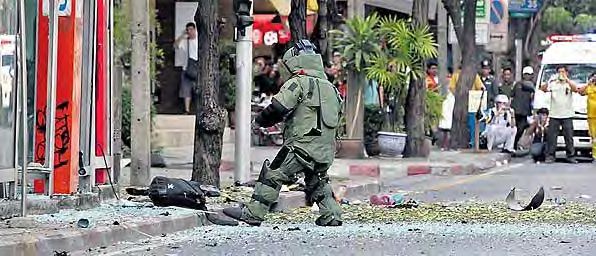
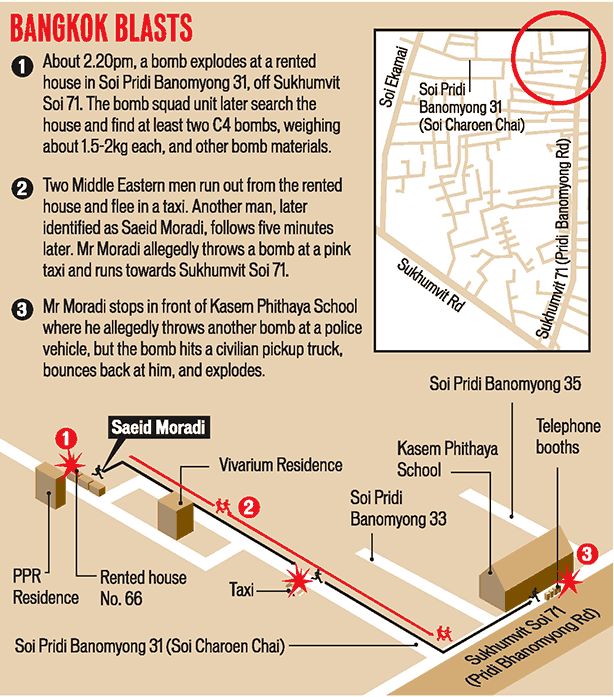

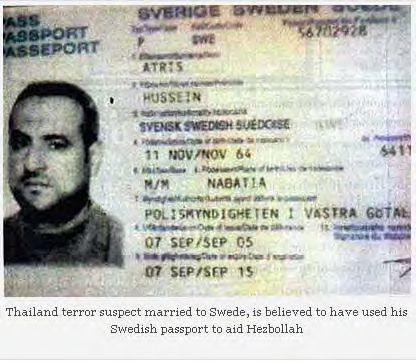

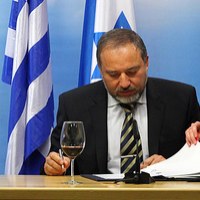
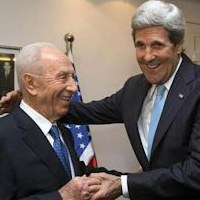
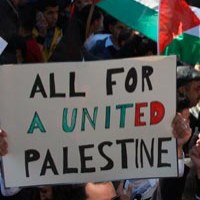














Latest Comments
Hello Mike, Thank you for your positive feedback to the article. I felt there wasn’t too much critical analysis of ...
Thanks for this considered and well constructed article. A follow up article on the manner in which the editorial contro...
THE CLUELESSNESS OF CLAIMING THAT OBAMA'S MIDDLE EAST POLICIES WERE A FAILURE CANNOT BE FURTHER FROM THE TRUTH, WHAT THE...
As long as Obama is the president of the usa do not trust the us government......
Thank you for an good read....